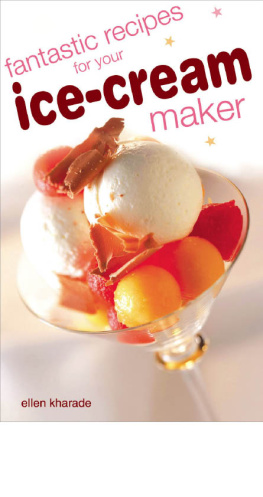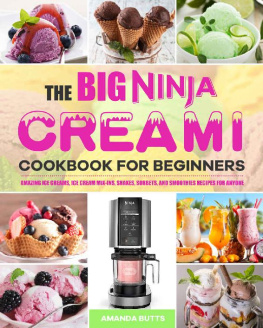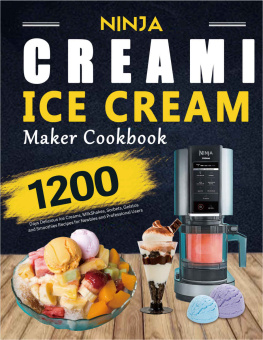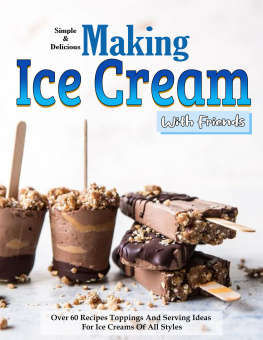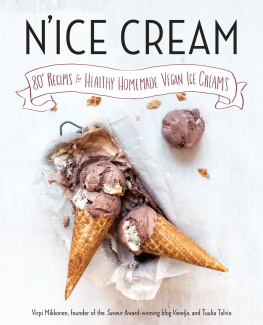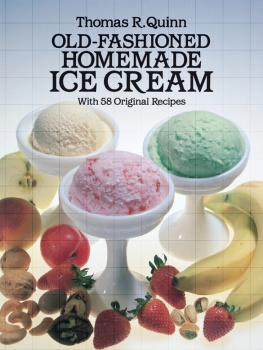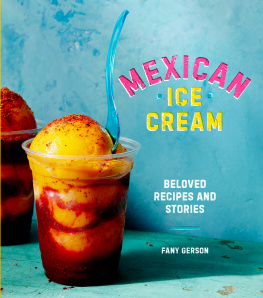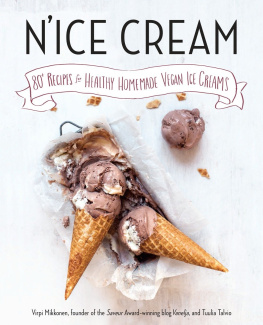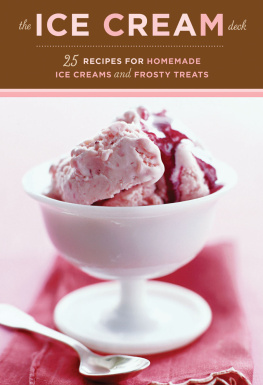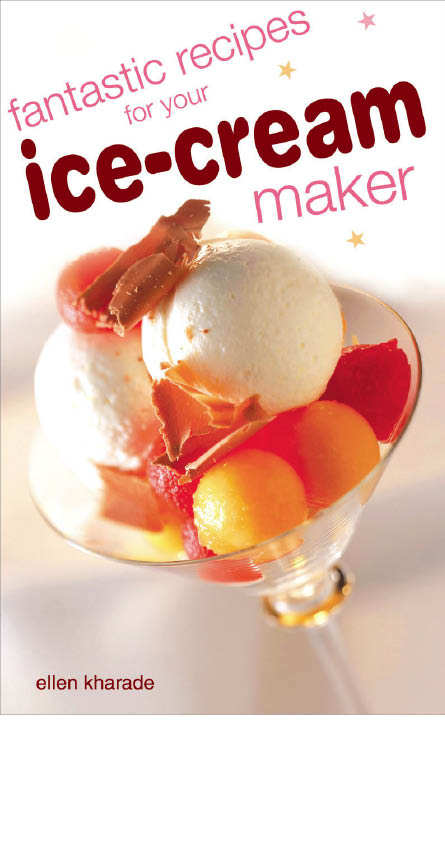Ice-cream has always been enigmatic to me. It was revered by the Victorians because it was a challenge to make, due to the absence of refrigeration, and because it often included rich, exotic ingredients that were difficult to come by. Even today, home-made ice-cream can be tricky to produce successfully if you dont own an ice-cream maker, since its texture is easily spoiled during freezing if it is not beaten regularly to break up the large ice crystals that can form inside the mixture as it freezes.
All of this has changed, however, thanks to the advent of the ice-cream maker, which automatically churns the ice-cream as it freezes, thus stopping the formation of large crystals that can spoil the end result. And that is really where the mystery ends! For you, making ice-cream can now be as simple as boiling a saucepan of milk, yet the end result is as impressive as it ever was.
What makes ice-cream special is the harmony of subtle flavours such as milk, cream, vanilla and sugar. Then by adding flavourings, including spices, roasted nuts, honeycomb and even lavender, you can create a range of unusual varieties. With freshly prepared fruit pures such as blackcurrant, strawberry, cherry or orange, you can produce various types of ices, from refreshing tangy sorbets and creamy parfaits to sumptuous bombes.
With this extensive collection of delicious ice-cream recipes, youll never be lost for ideas. Whether its for a family treat or a luxurious dinner-party dessert, theres a whole range of exciting ideas for you to try.
Making Perfect
Ice-cream
Making your own ice-creams and sorbets is really easy. Most ice-creams are based on a simple custard churned with cream and flavoured with fruit, chocolate or even herbs. You can also ensure that your ices are made of top-quality fresh ingredients without any of the unwanted additives or preservatives often used in shop-bought alternatives.
Types of ice-cream maker
There are two kinds of ice-cream maker, but they both work in very much the same way. Basically, the expensive ones have a built-in freezer, so once you have made up your ice-cream mixture, it is churned and frozen in the machine. If you have one of these machines, you wont need to transfer the churned ice-cream to the freezer until it is finished. The kind I use is just as effective but a lot cheaper! This type consists of a double-skinned bowl, which is filled with a freezing liquid, so the ice-cream freezes as it churns. Once the churning process is finished, you need to transfer the ice-cream to the freezer to finish freezing.
What if I dont have a machine?
If you dont own an ice-cream maker, do not despair; you can still make the majority of the recipes in this book, although youll have to put in a bit more effort!
Simply prepare the mixture in exactly the same way as usual; then, when it is ready, pour it into a freezer container. Put the mixture in the freezer for about an hour or so until you can see ice crystals forming along the edges. Remove it from the freezer and beat with an electric whisk until the ice-cream is smooth, then return it to the freezer for another hour. Youll have to repeat this process four or five times while the ice-cream is freezing to break down the ice crystals and ensure a rich, smooth texture. However, once you have tried a few of my recipes, Im sure an ice-cream maker will go straight on your Christmas-present list!
Ice-cream ingredients
All the recipes use ingredients that are readily available in your local supermarket, health food store or greengrocer.
Fruit
Always use fruit that is fresh and in peak condition, and avoid using it if bruised, damaged or mouldy. We can buy most types of fruit throughout the year, but fresh fruit usually has the best flavour when it is in season it will also be much cheaper so choose your ice-cream recipes depending on what is available in your area at that time of year.
Occasionally you may want to use a fruit that is out of season, in which case you can always use frozen fruit as an alternative as most of the nutrients and natural colours are retained during the freezing process.
Canned fruit can also be a good alternative, but do buy fruit in natural juice rather than syrup, and drain off the liquid before you liquidise the fruit. There are some canned fruits, such as lychees, that seem to have more flavour than their fresh counterparts.
Sugar
Sugar comes in a wide variety of forms and you can use most of them to sweeten your ice-cream, but they will give slightly different flavours. The only one to avoid is icing (confectioners) sugar as it contains a caking agent that can inhibit the freezing process.
Brown sugars give extra flavour and more of a treacle taste and are particularly good when used in custard-based ice-creams.
You also can make your own flavoured sugars to add a subtle taste to your ice-creams. Lavender-flavoured and vanilla-flavoured sugar are the most common. Simply place 20 lavender flower heads or a vanilla pod in a jar of caster (superfine) sugar and leave them to infuse for a couple weeks before use.
Alcohol
Alcohol can be a welcome addition to a special ice-cream, especially when used for Christmas or other celebration meals, but do stick to the recommended amounts as adding too much will prevent the ice-cream from freezing.
Quality flavourings
Always use the best-quality ingredients you can buy to flavour your ice-creams. Try to avoid those little bottles of vanilla and mint essence (extract) that have a synthetic flavour and are made from chemicals instead of natural ingredients. Pure extracts can be bought from good supermarkets, delicatessens or health food stores. They cost a little more but are well worth it.
Buying the best quality also applies to chocolate. All major supermarkets now stock plain (semi-sweet) chocolate with a cocoa mass content of 75 per cent, which will give you the best flavour; anything less will result in a poor-tasting ice-cream.
Hygiene
Obviously it is important to follow the normal common-sense hygiene rules when you are making ice-cream.
Many of the recipes contain eggs, which may carry a certain risk from the salmonella bacteria and multiply at room temperature, so be particularly careful when using raw or lightly cooking them. Children, pregnant woman and the elderly or infirm should not be given raw eggs or egg whites in ice-creams or sorbets.

